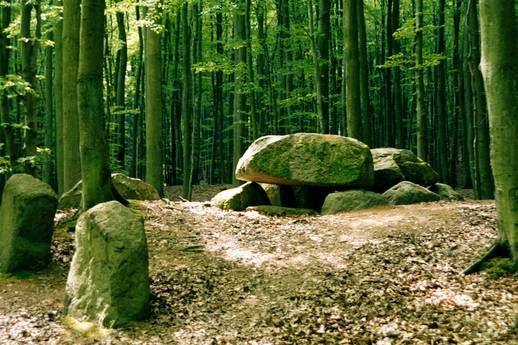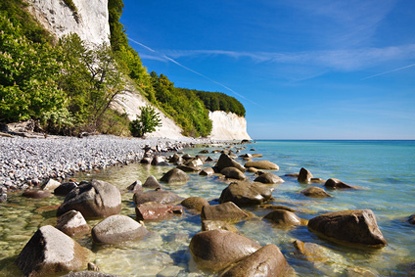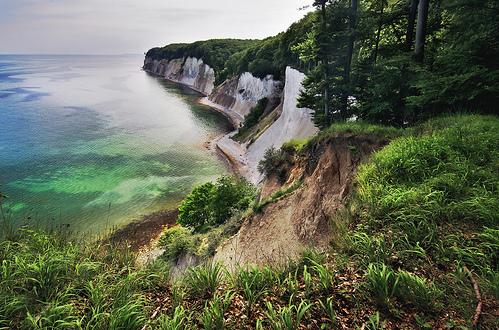The Jasmund National Park (German: Nationalpark Jasmund) is a nature reserve in the Jasmund peninsula, in the northeast of Rügen island in Mecklenburg-Vorpommern, Germany. It is famous for the largest chalk cliffs of Germany, the so-called Königsstuhl (German = "king's chair"). These cliffs are up to 161 m high above the Baltic Sea. The beech forests behind the cliffs are also part of the national park.
Consisting of only 30 km², this is the smallest national park of Germany. The park was founded in 1990 by the last government of the GDR prior to the German reunification.
On June 25, 2011 the beech forest in Jasmund National Park was added to UNESCO World Heritage List as an extension to the Primeval Beech Forests of the Carpathians and the Ancient Beech Forests of Germany.
Chalk cliffs
The chalk cliffs face constant erosion. With every storm, parts of the cliffs fall, including rocks and fossils of sponges, oysters and sea urchins.
The most majestic part of the cliffs is the 118-meter-high Königsstuhl (English: king's chair). One of the most scenic and best known of the chalk outcrops, the Wissower Klinken, collapsed into the Baltic Sea on February 24, 2005 in a landslide caused by spring-thaw weather conditions.
Flora and fauna
Because of the special geological characteristics of the Jasmund National Park, it is home to many rare plants and animals.
There are many swamp-like ponds in the forest behind the cliffs. In the woods of the Stubnitz there are numerous water-filled, undrained dells and hollows, most of which came into existence as ice-age dead ice holes. This is the place to see many plants, e.g. black alder, European crab apple, wild service tree, yew and types of orchids, for instance Cypripedium calceolus.
Ornithologists can find a variety of birds, for example the white-tailed eagle, kingfisher, house martin and the peregrine falcon.












